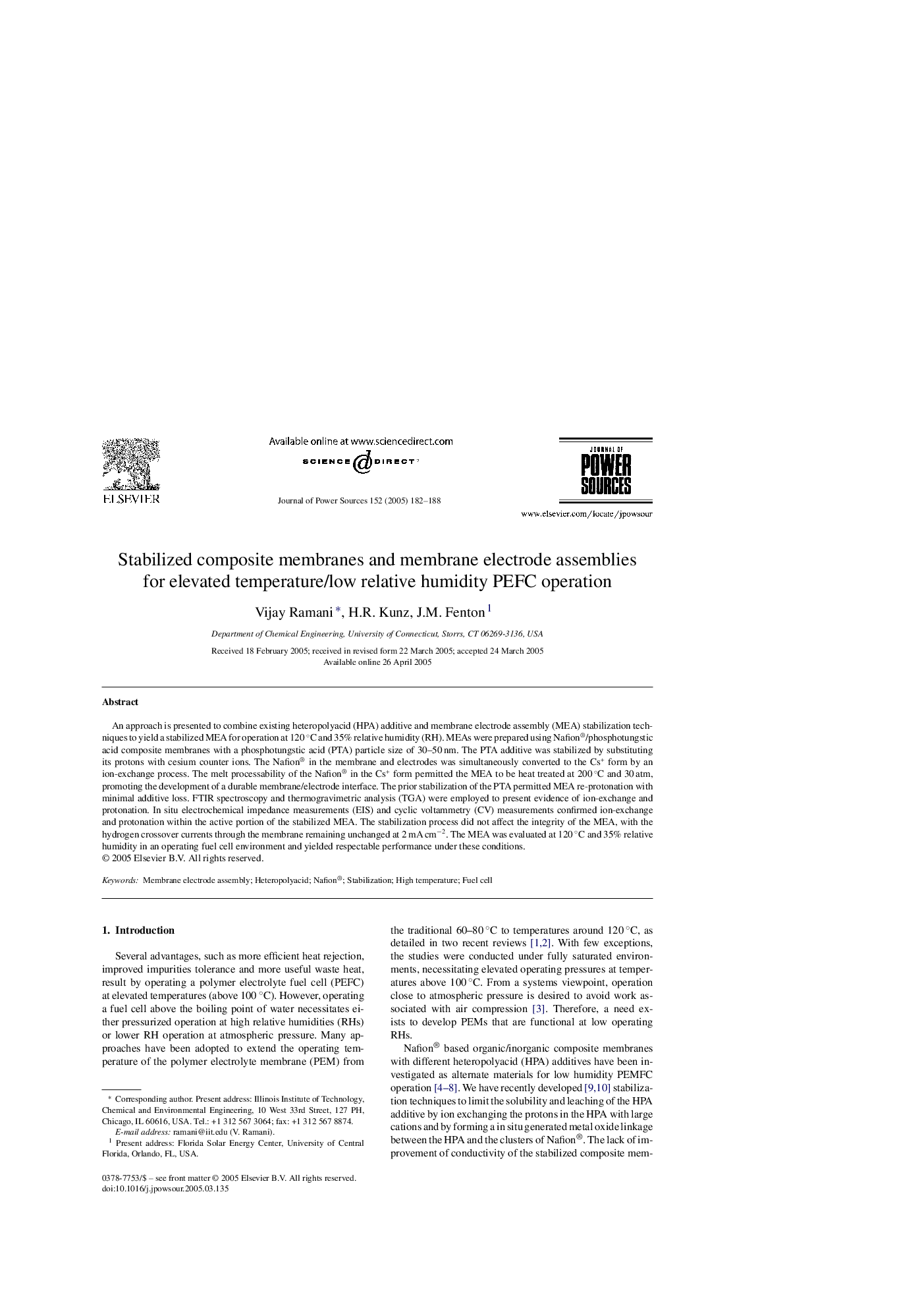| Article ID | Journal | Published Year | Pages | File Type |
|---|---|---|---|---|
| 9760120 | Journal of Power Sources | 2005 | 7 Pages |
Abstract
An approach is presented to combine existing heteropolyacid (HPA) additive and membrane electrode assembly (MEA) stabilization techniques to yield a stabilized MEA for operation at 120 °C and 35% relative humidity (RH). MEAs were prepared using Nafion®/phosphotungstic acid composite membranes with a phosphotungstic acid (PTA) particle size of 30-50 nm. The PTA additive was stabilized by substituting its protons with cesium counter ions. The Nafion® in the membrane and electrodes was simultaneously converted to the Cs+ form by an ion-exchange process. The melt processability of the Nafion® in the Cs+ form permitted the MEA to be heat treated at 200 °C and 30 atm, promoting the development of a durable membrane/electrode interface. The prior stabilization of the PTA permitted MEA re-protonation with minimal additive loss. FTIR spectroscopy and thermogravimetric analysis (TGA) were employed to present evidence of ion-exchange and protonation. In situ electrochemical impedance measurements (EIS) and cyclic voltammetry (CV) measurements confirmed ion-exchange and protonation within the active portion of the stabilized MEA. The stabilization process did not affect the integrity of the MEA, with the hydrogen crossover currents through the membrane remaining unchanged at 2 mA cmâ2. The MEA was evaluated at 120 °C and 35% relative humidity in an operating fuel cell environment and yielded respectable performance under these conditions.
Related Topics
Physical Sciences and Engineering
Chemistry
Electrochemistry
Authors
Vijay Ramani, H.R. Kunz, J.M. Fenton,
